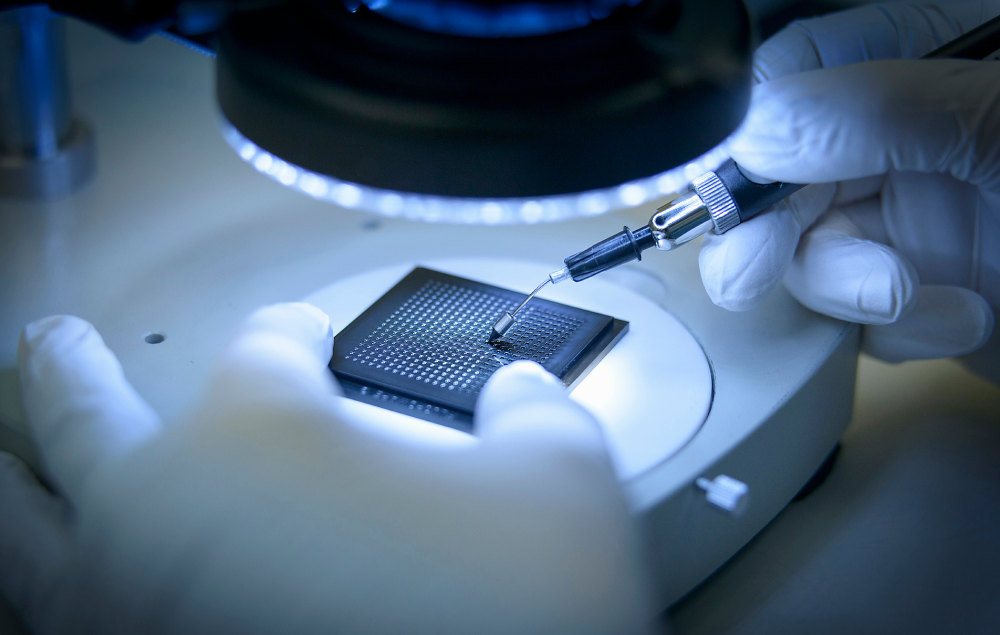Dutch deeptech QDI Systems, which has developed a material based on quantum particles that can improve the accuracy of X-ray images, has raised a €5m Series A to start commercialising its product.
The round included a €1.97m loan from the Netherlands Enterprise Agency, a government organisation that gives out low-interest R&D credits. The remaining €3m equity fundraise was led by Dutch regional development agency NOM and included returning Dutch investors Carduso Capital and RUG Ventures, as well as Nordic VC Maki.vc.
QDI Systems manufactures tiny particles called quantum dots in the form of a liquid that can be used to coat X-ray machines, leading to more accurate images while reducing radiation doses for patients, the company says.
The technology could significantly improve the quality of medical imaging processes like mammography screening, enabling faster and more precise diagnostics.
Quantum dots “ink”
Quantum dots, which were discovered in the early 1980s, are highly sensitive and particularly good at converting photons — particles of light — into electronic signals.
These ultrasmall particles — just a few nanometres wide — are typically applied to a thin film that can be added as an extra layer to an imaging device as a way to increase the sensitivity and enhance the output of that device.
They have already found applications in various commercial products, such as high-quality TV displays and infrared sensors — but QDI Systems’ founder Artem Shulga theorised in 2019 that they could also improve the accuracy of images produced by X-rays, while also absorbing much of the radiation dose.
“We worked in stealth in the lab for three years making quantum dot devices and seeing how they reacted to X-rays,” he says. “It was quite tough because it was inconclusive… There was no literature reference, we started from scratch. It was a completely new application.”
Applying a layer of quantum dots to an X-ray machine is challenging because of how thick that layer needs to be to effectively stop radiation — “orders of magnitude” thicker than other applications like infrared sensors or TV displays, according to Shulga. This requires optimising the quantum dots to make sure they stick together and don’t crack.
After three years, Shulga and his team successfully developed a method to manufacture large volumes of quantum dots in the form of a liquid similar to ink, which is then sprayed onto X-ray machines, “similar to painting a car”, says the founder.
The technique developed by QDI Systems will also enable the company to sell the technology at a much lower price point than its competitors, it claims.
Quantum dots currently sell for $1k per gram and about 50g of quantum dots are necessary to coat one X-ray machine. Shulga says the company is aiming to bring that price down tenfold, selling at about €100 per gram for a sale price of about €5,000 for one machine.
What’s next?
QDI Systems has already secured partnerships with large manufacturers of X-ray devices including US multinational Varex.
Although the company has made a few sales as part of these R&D-focused partnerships, it has not yet started commercialising its product.
“We think our product is 90% ready,” says Shulga. “We still need to go through the last 10%, which are the most difficult steps before commercialisation — reproducibility and making the sensors exactly the same as each other.”
The founder is hoping to start commercialising the product in the first half of 2025, targeting the mammography market, and is aiming to make between 500 and 1,000 sales in the first rolling year.
For the last year and a half, QDI Systems has also been applying the technology to infrared sensors with conclusive results. Given that these require thinner layers of quantum dots, the company expects to start commercialising its product for infrared sensors from the end of 2024 or early 2025.
Running the two projects in parallel will require new recruits, says Shulga. The company is therefore aiming to double the size of its 10-people team in the next 12 months.


